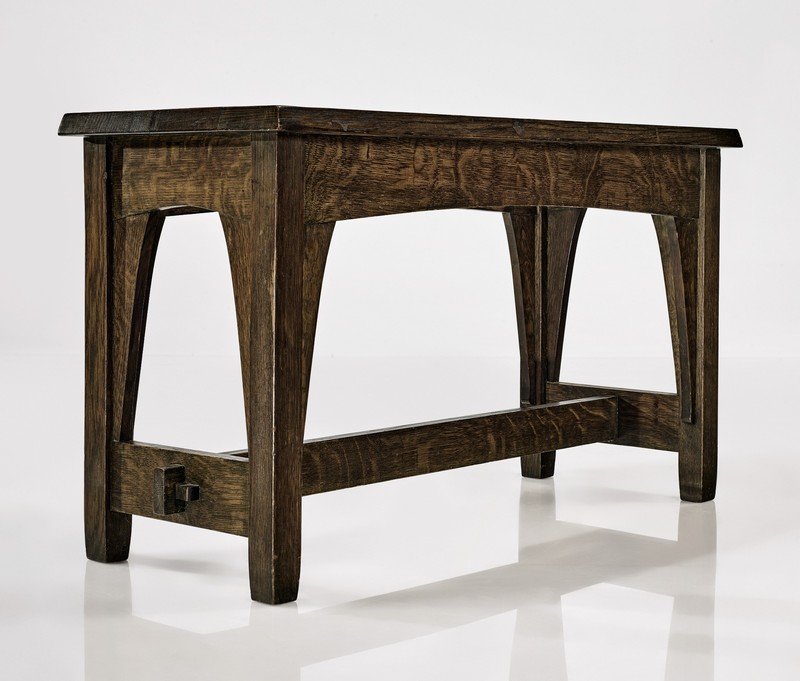Piano Bench (no. 176)
Item
Title
Piano Bench (no. 176)
Creator
United Crafts
Date
1901-02 (ca.)
Medium
Oak
Credit line
Private Collection
Description
In 1901 Stickley offered four piano benches to customers, demonstrating that he was acutely aware of market conditions and signaling the intended class of customer he hoped to engage. According to historian Gerald Carson in 1965, in the decade preceding Stickley’s New Furniture catalog, “the number of pianos in use in American homes increased more than five times as fast as the population, and at the beginning of the new century the public owned a million pianos.” By 1900, according to the National Piano Manufacturers Association, just over 170,000 pianos were shipped–a number that does not include imported instruments. In spite of its increasing penetration into different segments of the market–through the lowering of price as a result of innovation–the piano remained a luxury item that was out of the reach of most families. Although one million pianos in 1900 represented exponential growth of ownership, with more than 15 million households in the United States at that time, the evidence suggests that less than seven percent of households had access to a piano at home.
It is clear, from the price data we have, that if The Craftsman spoke about a democratic art that would “address itself, not to any small fraction of society, but to humanity in general,” the cost of his furniture made itself available to only that “small fraction of society” who could afford these designs. By 1904, Stickley entered the expanding piano market more directly, publishing the first iteration of his “Craftsman Piano” in the catalog What is Wrought in the Craftsman Workshops, in mid-April 1904.
Sources: Gerald Carson, “The Piano in the Parlor,” American Heritage 17 (1965). The article is available online at https://www.americanheritage.com/piano-parlor#1
Arthur Carson, “The Relation of the Arts and Crafts to progress,” The Craftsman 6 (June 1904): 232.
It is clear, from the price data we have, that if The Craftsman spoke about a democratic art that would “address itself, not to any small fraction of society, but to humanity in general,” the cost of his furniture made itself available to only that “small fraction of society” who could afford these designs. By 1904, Stickley entered the expanding piano market more directly, publishing the first iteration of his “Craftsman Piano” in the catalog What is Wrought in the Craftsman Workshops, in mid-April 1904.
Sources: Gerald Carson, “The Piano in the Parlor,” American Heritage 17 (1965). The article is available online at https://www.americanheritage.com/piano-parlor#1
Arthur Carson, “The Relation of the Arts and Crafts to progress,” The Craftsman 6 (June 1904): 232.

